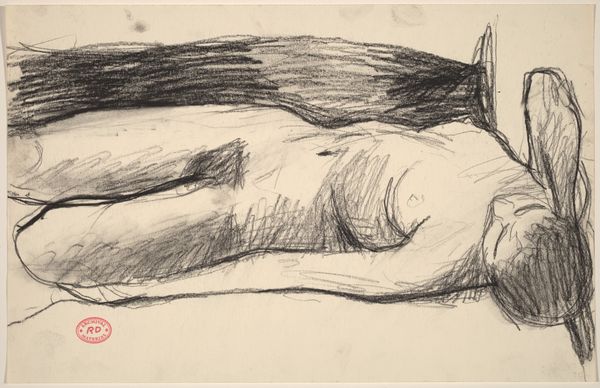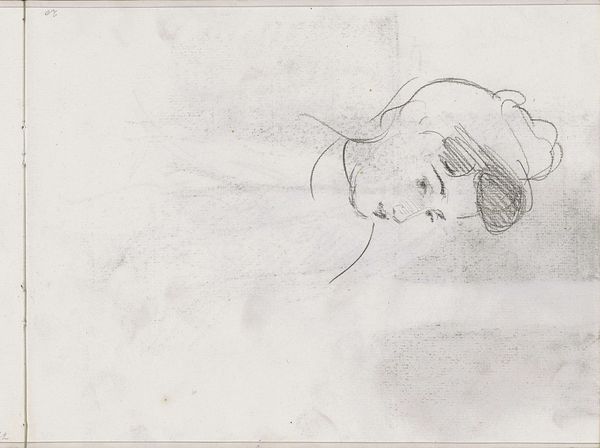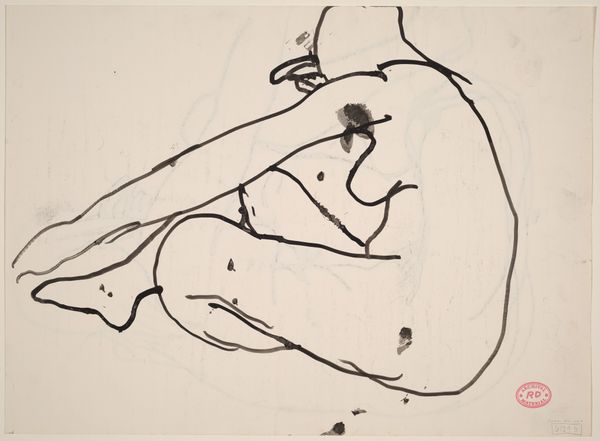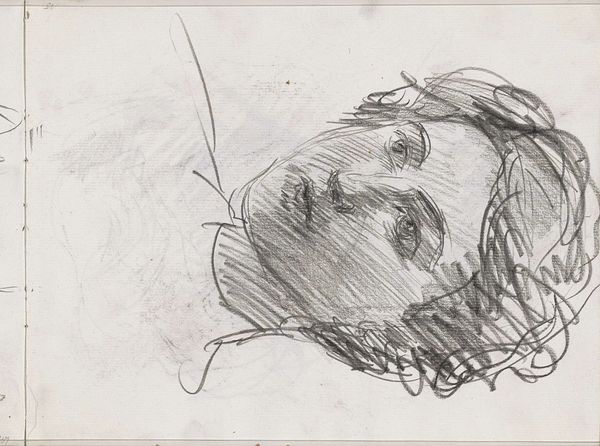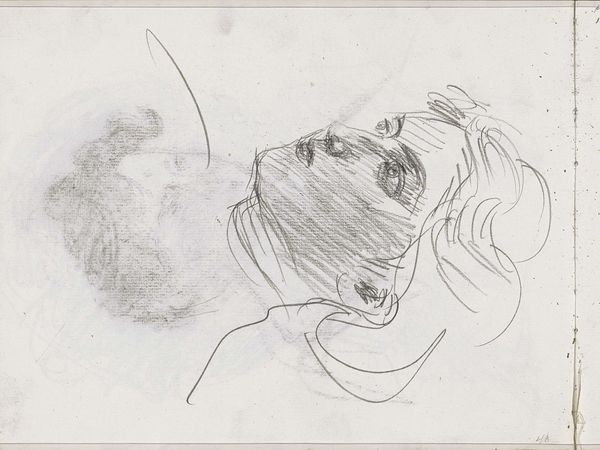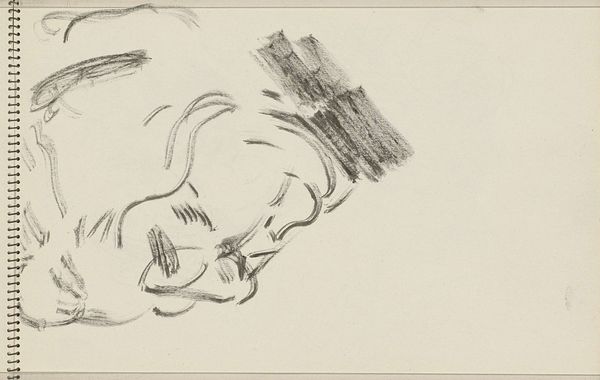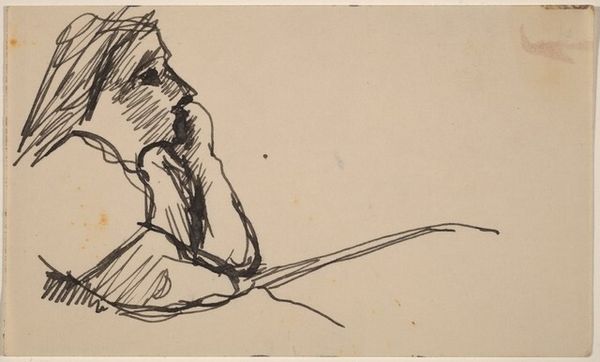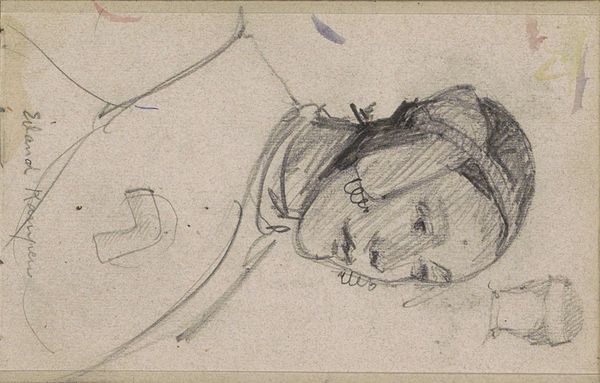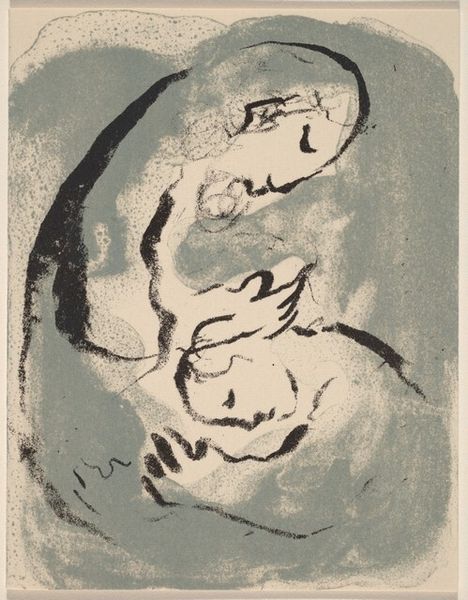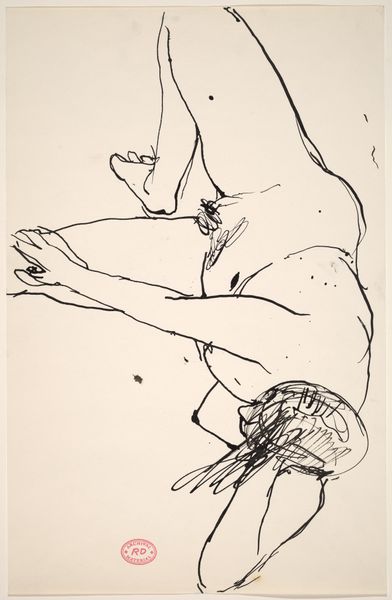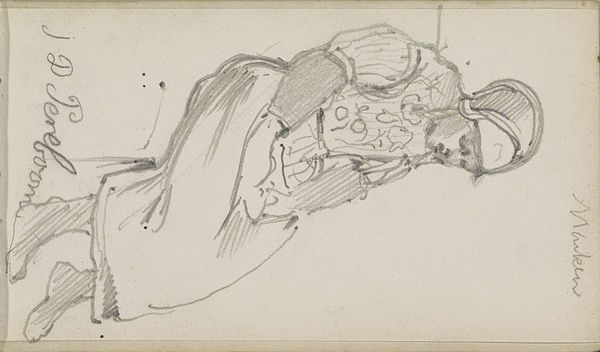
drawing, ink
#
drawing
#
imaginative character sketch
#
figuration
#
abstract
#
personal sketchbook
#
ink
#
idea generation sketch
#
sketchwork
#
character sketch
#
ink drawing experimentation
#
pen-ink sketch
#
line
#
sketchbook drawing
#
storyboard and sketchbook work
#
nude
#
sketchbook art
#
modernism
Copyright: Public Domain: Artvee
Curator: What a poignant study! We’re looking at a drawing titled "Nude" from the 1930s by Cyprián Majerník. It's rendered in ink, showcasing a figure in a kneeling or crouching pose. Editor: My initial reaction is one of melancholy. The lines are sparse, almost tentative, and the hatching creates areas of deep shadow that give the figure a sense of being weighed down. Is she praying or just exhausted? Curator: Majerník's work often reflected the socio-political anxieties of his time, particularly in Czechoslovakia during the interwar period. He captures human vulnerability using quite economical methods. While we lack definitive context for this drawing, such nudes resonated during a time when modern life created more alienation than integration. Editor: I see a tension between the classical subject of the nude and the raw, almost Expressionist execution. The way the face is obscured feels almost like a denial of individual identity, contributing to a larger statement about anonymity and societal pressures. Curator: Precisely. The obscured face is really crucial here. We can see how the stylistic conventions of modernism intersect with societal conditions. Modernist styles allowed a visual shorthand for alienation that felt radical compared to prior traditions, yet this drawing also reflects the interwar public role of art to depict what words simply could not express. Editor: I am curious about the gesture of covering the head, since I notice that we do not see hands. It is not simply hiding: this pose reminds me of mourning rituals where grief envelops the entire body. So much raw emotion, expressed with just a few strategically placed lines. It taps into very primal visual instincts. Curator: Definitely. You’ve touched upon the potent universality of the image. Majerník captured a feeling through these economical strokes of ink, and by focusing on that solitary figure. Editor: So even though it’s rooted in a specific time and place, that feeling transcends history and place. What resonates is not necessarily its social commentary, but the empathy. Curator: Indeed. Even lacking full context, this image still sparks visceral understanding, and empathy continues to be a radical message. Editor: A radical expression then and perhaps even now. It gives you chills.
Comments
No comments
Be the first to comment and join the conversation on the ultimate creative platform.
